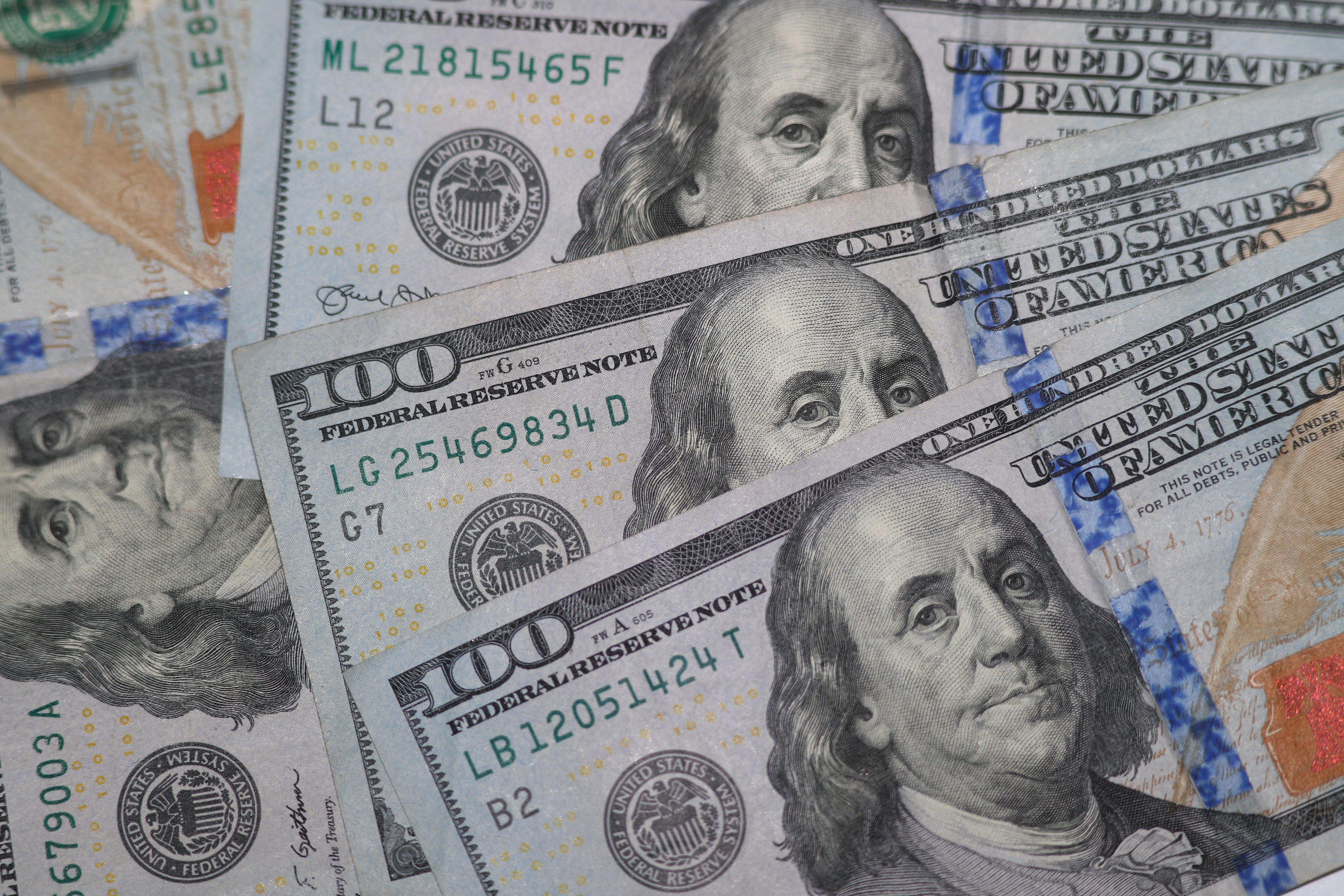Use your tax refund to knock down debt, lift your finances
If you’re expecting a tax refund, you’re probably contemplating what to spend this newfound money on

Your support helps us to tell the story
From reproductive rights to climate change to Big Tech, The Independent is on the ground when the story is developing. Whether it's investigating the financials of Elon Musk's pro-Trump PAC or producing our latest documentary, 'The A Word', which shines a light on the American women fighting for reproductive rights, we know how important it is to parse out the facts from the messaging.
At such a critical moment in US history, we need reporters on the ground. Your donation allows us to keep sending journalists to speak to both sides of the story.
The Independent is trusted by Americans across the entire political spectrum. And unlike many other quality news outlets, we choose not to lock Americans out of our reporting and analysis with paywalls. We believe quality journalism should be available to everyone, paid for by those who can afford it.
Your support makes all the difference.So you’re expecting a tax refund this year. With inflation driving up the price of gas, food and nearly everything else, that extra money can’t come soon enough. The hard part is deciding how to spend it. Should you invest the money? Book a trip?
If you really want to do yourself a favor, use your refund to pay off debt. Here’s why.
YOU’LL SAVE ON INTEREST
“The cost of carrying debt is very expensive,” says AnnaMarie Mock, a certified financial planner with Highland Financial Advisors in Wayne, New Jersey. “Especially if you’re looking at regular consumer debt, like credit cards, (the interest rate) could be north of 16%.”
Issuers do charge higher rates, often well past 20%, depending on the type of card or the user’s credit score.
Let’s say you’re trying to pay off $6,000 in credit card debt on a card with a 19% interest rate by paying $200 a month. You’ll pay $2,204 in total interest by the time the credit card is paid off. Here’s how using a tax refund could reduce that cost: If you receive a $1,500 refund and put the full amount toward the balance, then continue making the same monthly payment, the total interest you pay would drop to $1,107. You’d also wipe out the debt a year sooner.
With the Federal Reserve’s federal funds interest rate hike in March, plus additional hikes expected later this year, debt is getting even more expensive. Most credit card rates are variable, and issuers will likely raise them in response to the Fed’s actions. Pay off more, or all, of your balance now to avoid overspending on interest.
What if you have multiple debts? Accelerating payments on the account with the highest interest rate first, then moving on to the next highest (a strategy known as debt avalanche), is generally the quickest and cheapest way to become debt-free. You can use a debt payoff calculator to estimate how different rates and payment strategies will impact how much you owe.
YOU CAN BUILD YOUR CREDIT SCORE
Your credit utilization, or the percentage of your credit limits you’re using, is a big factor in your credit score. Using a tax refund to shrink your balance helps shrink your credit utilization, which can benefit your score.
“The higher our credit score, the lower the price becomes for life in general,” says Tina Herndon, a financial education and training manager with Balance, a nonprofit financial education and counseling organization based in Concord, California.
Paying off debt can get you ahead long term, she says, opening the door to more affordable loans. “If you can pay 2.9% interest on a $25,000 car versus a 21% interest, it’s going to save you hundreds of dollars a month,” Herndon says.
A drastic change in credit won’t happen overnight, and there are other factors that shape your score. But paying down high-rate debt is an important step in the right direction. And having lower debt compared to your income can improve your odds of qualifying for new credit.
IT CAN MOTIVATE YOU
Debt can be “a hurdle that people mentally need to overcome before they can potentially go on to the next phase, to start saving for goals,” Mock says.
Make a list of your financial goals. Maybe you want to buy a house or send your kid to college. Eliminating debt can bring you closer to reaching those milestones.
Maybe your goal is simply to be debt-free. Even if your refund isn’t enough to wipe out your debt all at once, watching your balance drop can build the momentum you need to keep chipping away at it.
YOU DON’T HAVE TO SACRIFICE FUN
Using your refund for debt repayment doesn’t mean there’s no room for fun purchases. In fact, by reducing debt you’ll have more funds available to do with what you please. Once you’ve paid off your bills, you can take the amount you were spending on payments and put it toward something that brings you joy. Boost your entertainment budget or start a vacation fund, for example.
But if you don’t want to wait, go ahead and treat yourself now. Herndon suggests allocating a certain percentage or dollar amount to a “fun category.” If you receive a $2,000 refund, you could set aside 10%, or $200, for a spa visit or new headphones.
“It’s all about moderation and making sure that you’re thinking through the trade-offs of not putting the entire thing towards debt,” Mock says.
___________________________
This article was provided to The Associated Press by the personal finance website NerdWallet. Lauren Schwahn is a writer at NerdWallet. Email: lschwahn@nerdwallet.com. Twitter: @lauren_schwahn.
RELATED LINKS:
NerdWallet: How to get out of debt https://bit.ly/nerdwallet-how-to-get-out-of-debt